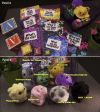Prescriptive scientific narratives for communicating usable science
- PMID: 25225369
- PMCID: PMC4183172
- DOI: 10.1073/pnas.1317502111
Prescriptive scientific narratives for communicating usable science
Abstract
In this paper I describe how a narrative approach to science communication may help audiences to more fully understand how science is relevant to their own lives and behaviors. The use of prescriptive scientific narrative can help to overcome challenges specific to scientific concepts, especially the need to reconsider long-held beliefs in the face of new empirical findings. Narrative can captivate the audience, driving anticipation for plot resolution, thus becoming a self-motivating vehicle for information delivery. This quality gives narrative considerable power to explain complex phenomena and causal processes, and to create and reinforce memory traces for better recall and application over time. Because of the inherent properties of narrative communication, their creators have a special responsibility to ensure even-handedness in selection and presentation of the scientific evidence. The recent transformation in communication and information technology has brought about new platforms for delivering content, particularly through interactivity, which can use structured self-tailoring to help individuals most efficiently get exactly the content that they need. As with all educational efforts, prescriptive scientific narratives must be evaluated systematically to determine whether they have the desired effects in improving understanding and changing behavior.
Keywords: adolescents; decision making; interactive video.
Conflict of interest statement
The author declares no conflict of interest.
Figures




References
-
- Millar R, Osborne J, editors. Beyond 2000: Science Education for the Future. London: King’s College London, School of Education; 1998.
-
- Schank RC, Abelson RP. Knowledge and memory: The real story. In: Wyer RS, editor. Knowledge and Memory: The Real Story. Hillsdale, NJ: Lawrence Earlbaum Associates; 1995. pp. 1–85.
-
- Green MC, Garst J, Brock TC, Chung S. Fact versus fiction labeling: Persuasion parity despite heightened scrutiny of fact. Media Psychol. 2006;8(3):267–285.
-
- O'Keefe DJ. Message properties, mediating states, and manipulation checks: Claims, evidence, and data analysis in experimental persuasive message effects research. Commun Theory. 2003;13(3):251–274.
-
- Kreuter MW, et al. Narrative communication in cancer prevention and control: A framework to guide research and application. Ann Behav Med. 2007;33(3):221–235. - PubMed
Publication types
MeSH terms
Grants and funding
LinkOut - more resources
Full Text Sources
Other Literature Sources
Medical
Research Materials

